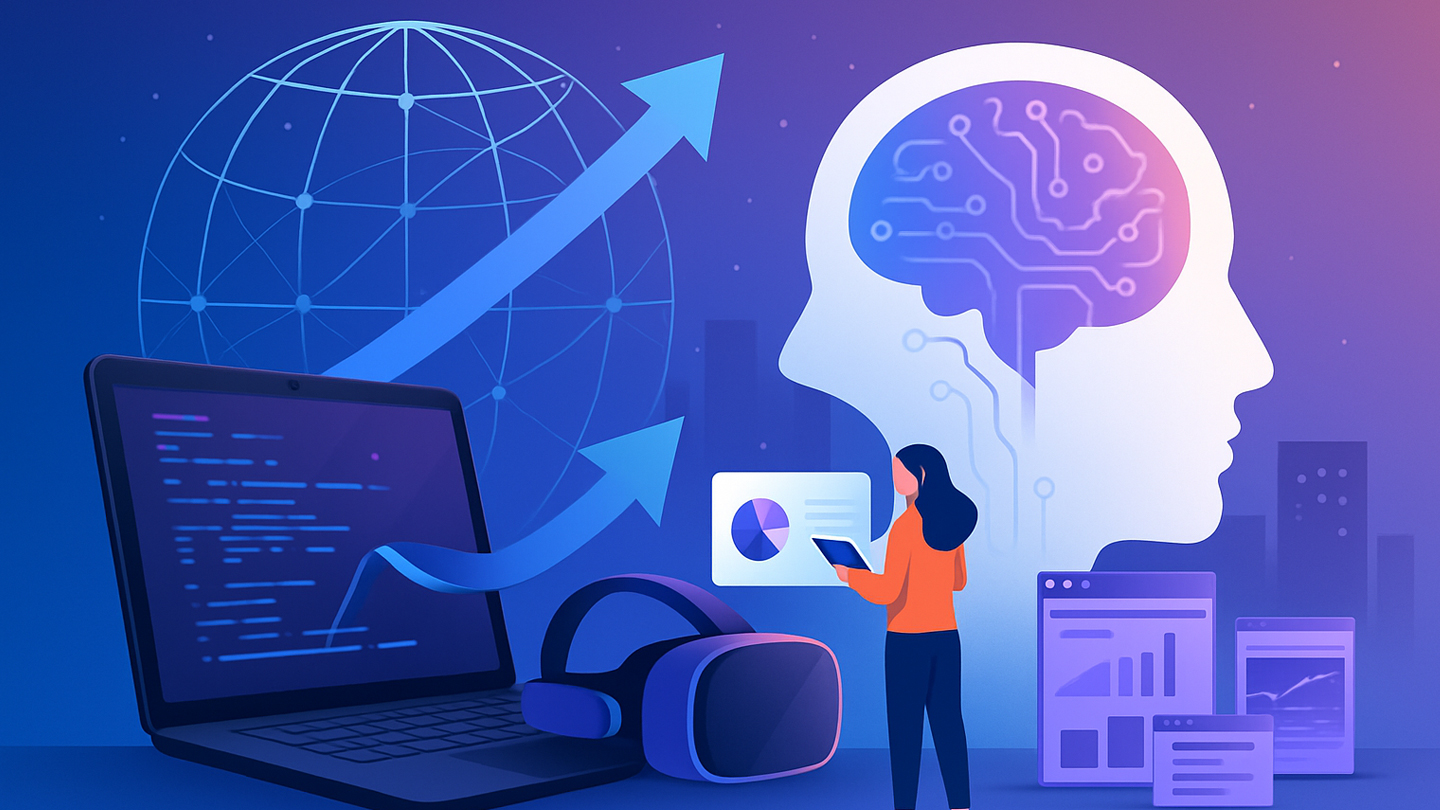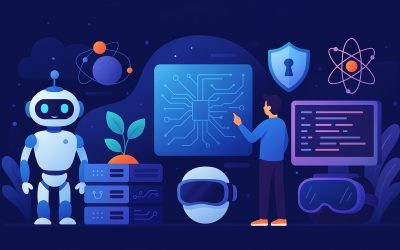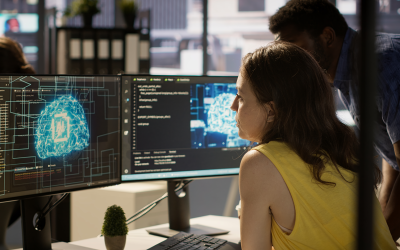The Journey of Computing Toward Hyperconnectivity
In this article, we explore how computing has evolved from being a simple office tool to becoming the central axis of a new digital era. From software development to the emergence of the metaverse and artificial intelligence, we analyze how these technologies are redefining the way we work, learn, and connect.
💻 A Brief History of Modern Computing
Modern computing began in the 1940s with the development of the first electronic computers like ENIAC. In the following decades, we moved from massive, costly systems to accessible personal devices. The rise of the internet in the 1990s democratized access to information, while cloud computing, mobility, and smartphones in the 2000s transformed our interaction with technology. Today, we live in a world where data, connectivity, and artificial intelligence are at the center of everything.
🌐 What Is Hyperconnectivity and How Does It Affect Us?
Hyperconnectivity refers to the constant interconnection between people, devices, systems, and platforms. This means that nearly everything—from watches to cities—is connected and generates real-time data.
It affects us on many levels: improving efficiency and access to information, but also raising challenges such as digital overexposure, cybersecurity, and technological dependence.
🧠 Metaverse Applications Beyond Entertainment
While many associate the metaverse with video games and immersive experiences, its potential goes far beyond that:
- Education: Virtual classrooms where students interact in 3D environments.
- Healthcare: Surgical simulations and remote training for professionals.
- Work: Virtual offices and meetings with personalized avatars.
- Commerce: Digital stores that let users try products via augmented reality.
🤖 How AI and Machine Learning Are Transforming Daily Life
Artificial intelligence (AI) and machine learning are already part of our daily routines—often without us noticing:
- Recommendation engines (Netflix, Spotify)
- Virtual assistants (Siri, Alexa)
- AI-assisted medical diagnostics
- Autonomous vehicles and smart routing
- Task automation in the workplace
These technologies not only optimize processes but also expand our capabilities and redefine entire industries.
👩💻 The New Role of the IT Professional: More Creative, More Human
Knowing how to code is no longer enough. Today’s professionals need soft skills: critical thinking, communication, empathy, and creativity.
Their role has evolved—they are now innovators, problem-solvers, and change facilitators. Technology is the tool, but the purpose remains deeply human: to improve lives.
Today, more than ever, it’s not just about knowing how to use technology, but about knowing how to imagine with it.



